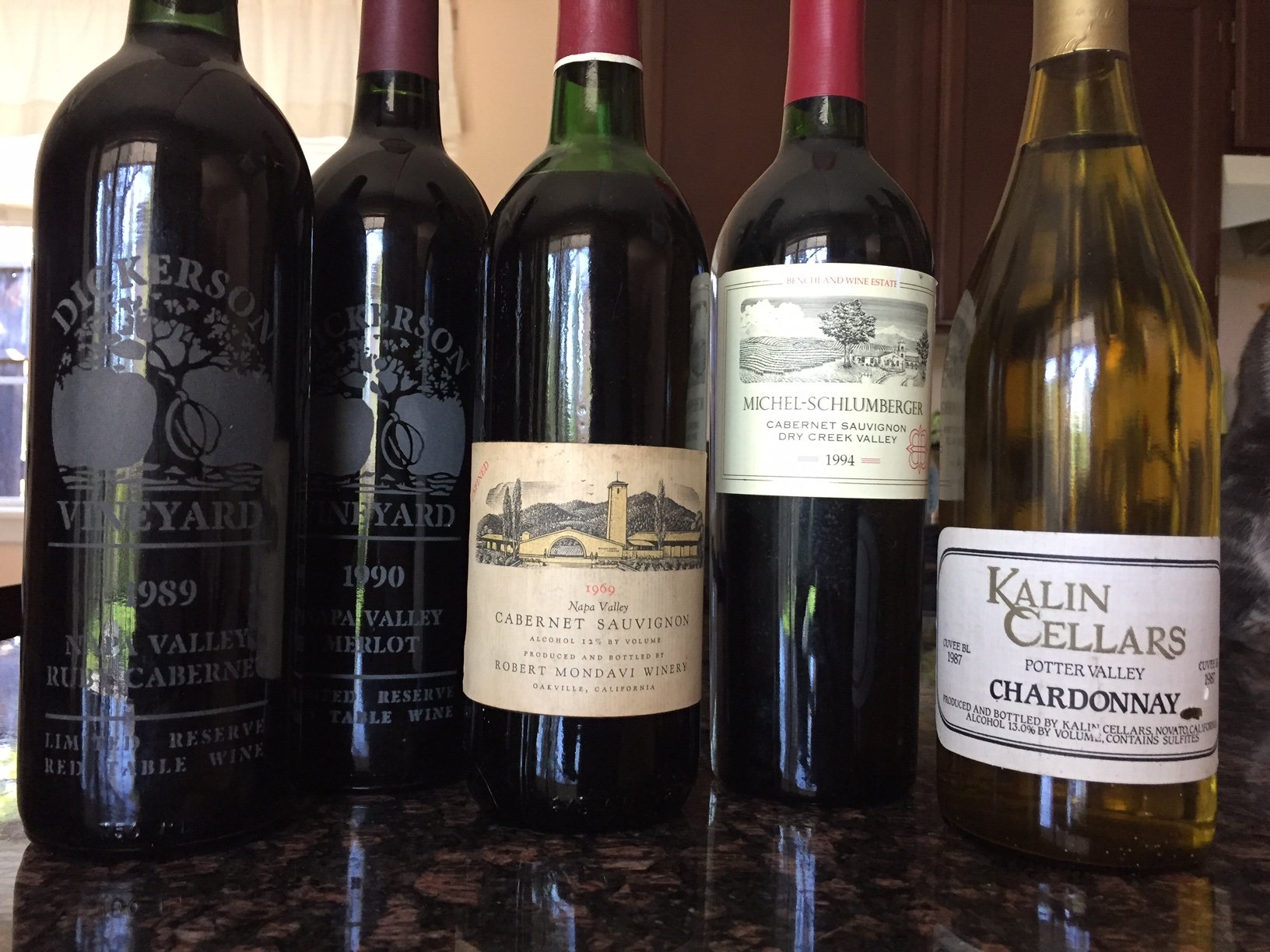Old Bottles

I've always wondered how long a bottle of wine could age and still be drinkable. I think my initial curiosity was piqued by a book describing the most expensive bottle of wine ever sold at auction, which was, as it happens, a con. The Billionaire's Vinegar, by Benjamin Wallace, describes a cache of French wine supposedly owned by Thomas Jefferson which was found in a sealed off section of a basement "somewhere in Paris." These bottles were complete fakes, and surprisingly, no one really bothered to research their provenance. The most expensive of these was a 1787 Château Lafite Bordeaux, which sold at auction for just over $150,000.
Much has been written lately about fraud in the very high end wine auction world, and this collection of some 30 bottles is about as bad as it gets. The engraved initials "Th. J." and the location of the find led their seller to trumpet these as bottles owned by Thomas Jefferson during his time as Minister to France. No one questioned the sketchy details of where and how Hardy Rodenstock came into possession of these bottles. More laughable was that under microscopic examination, the initials turned out to have been carved by a modern electric dental tool. Who would have thought to check something like this before laying down $150,000 for a single bottle of wine?
Not being nearly this big a spender, I plopped down a far more modest sum for four older bottles which K & L Wines had listed on their website: a 1966 Bordeaux, a 1971 Beringer Cab, a 1976 Stag's Leap Cab, and a 1969 Mondavi Cab. I've opened all but the last, to varying effect. The first was the 1966 Bordeaux, which I drank with friends two years ago. The cork was black (not a good sign), and though I was hoping the wine would change from the foul smelling, oxidized pool of toxic waste that I tasted after popping the cork, let's just say it never really "opened up." Of course, I had no idea where this wine had been, so I assumed it might have just been a storage problem with its previous owner (or owners), so a few months later, my wife and I tried the Beringer Cab. Same experience, different wine.
After two disappointments, and having already poisoned one set of friends, I decided to try the 1976 Stag's Leap Cab on another set of unwitting fools dear friends. Actually, this wine had a great story, since this was the year that a 1973 Stag's Leap Cab was chosen by a panel of French judges over a six-year-old bottle of Château Mouton Rothschild: the famed "Judgment of Paris" which put Napa Valley and American wine on the map. So, even if this was another mixture of oxidized sludge, we were tasting a bit of history (or that's what I told them). When we opened the Stag's Leap, the smells coming out of the bottle suggested the name of the winery was ironically appropriate (give it a minute; it'll come to you). This was going to be a really bad taste of history. But after about 15 minutes, the bad odor dissipated, and so we tried it. It was not the most amazing wine ever, but it was entirely different from any wine I'd ever tried. As wine tastings go, I counted this a success.
Since then, I've been eyeing that bottle of Mondavi Cab, with its own historical underpinnings since this bottle represents one of the first vintages by Robert Mondavi after breaking off from his family to open his own winery in Oakville. You can already hear me building up the story for my next set of guinea pigs. I've also bought a couple of less ancient Napa wines, a 1989 Cab and a 1990 Merlot (both of which I've opened and drank), as well as a 1987 Napa Chardonnay that I'm hoping won't disappoint. I think there's a magic to opening a bottle that's older than your adult children and finding that it is still, at the very least, palatable. There's probably the same kind of joy in finding out as much about your adult children (okay, that was kind of low). Wine is history, and it's preciously ephemeral. Opening an old bottle of wine is always a memorable occasion . . . and sometimes, if you're lucky, it will turn out to be a good memory.